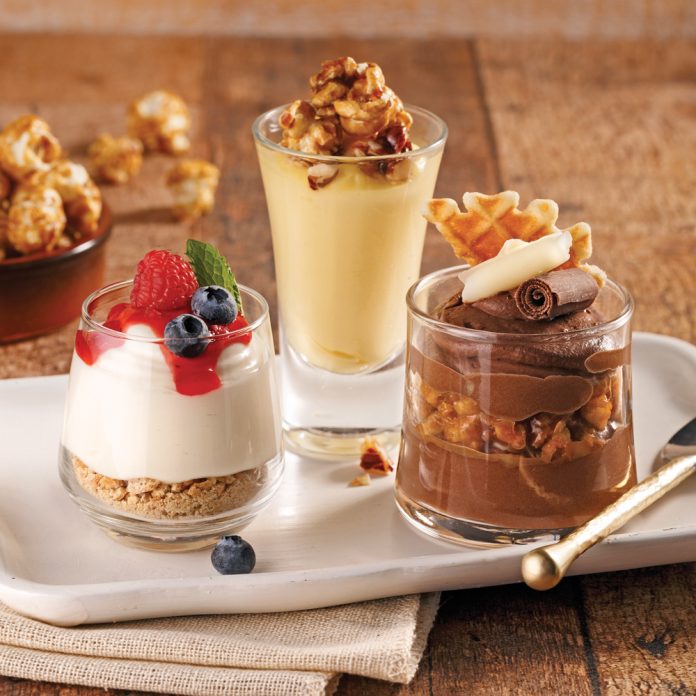Firmly ensconced on the European scene, the verrine has made headway in other parts of the world but has a long way to go before it achieves full acceptance.
But first of all, what is it? A small glass filled with layers of food savory or sweet. The glass can be as small as a shot glass – savory verrines have become a pretty standard feature at elegant finger food receptions, just the way a Chinese porcelain soup spoon containing a single won ton and some broth, or a tiny bowl of cold soup like gazpacho or vichyssoise, have come to be.
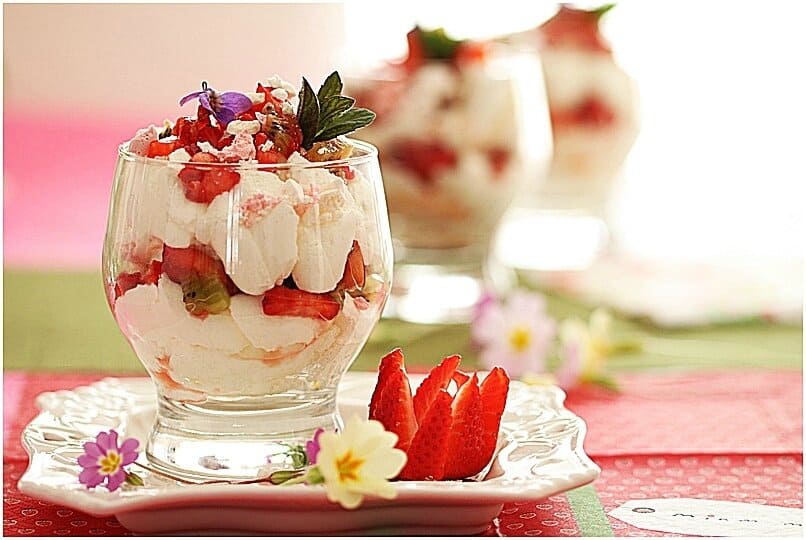
The glass would be that same small size for amuse bouches as well, but somewhat larger for verrines used as a starter or, in sweet form, a dessert. But it’s definitely usually a small unstemmed glass or sometimes a small glass bowl, less frequently a miniature parfait glass.
A variation of the verrine idea for starters and desserts both is to serve two or three different little glasses together adding up to one full course-size portion. Some opt for this as much for the presentation possibilities as anything else: the glasses can be nestled into herbs and leaves and flowers, so the plate’s a real beauty.
Transparency And Surprise Are Key
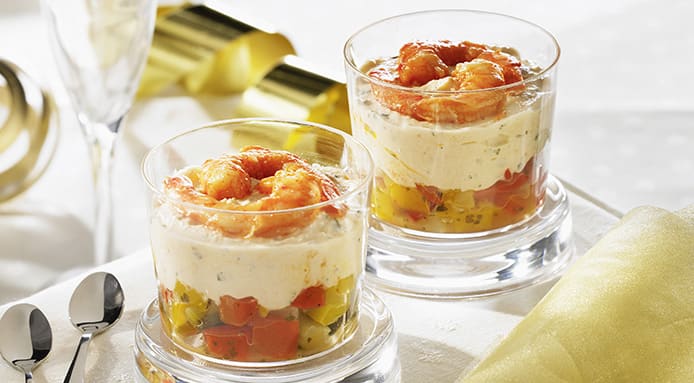
The transparency of the glass highlights the verrine’s different colors and textures. These can be raw ingredients, minced, mousse-y, custardy, sauce-like, whipped, shredded, julienned, a duxelles or mirepoix, the possibilities are endless and verrine recipes simple and not simple abound. The visual aspect is important, but even more so are the three Ts: taste, texture and temperature. Because although you can see what’s going on in the glass, there’s still an often big surprise element when you dig into a verrine with that small spoon: highly skilled chefs can create layers that are by turns tepid, hot, and cold, textures that are creamy, crunchy, and liquid. Verrines have a very high surprise quotient, which is part of their attraction.
At a time when more and more folks are ‘eating healthy’, and chefs are cooking more and more vegetables, verrines offer an excellent means of preparing them – also fish, think fish mousse, or veg with a seafood trim – in new and exciting ways.Because sophisticated verrines are the result of highly skilled cookery, they are a great place to hone not only those cheffy skills but also for diners to work on developing their taste buds, and experience some rare taste sensations.
A Bit Of This And A Bit Of That
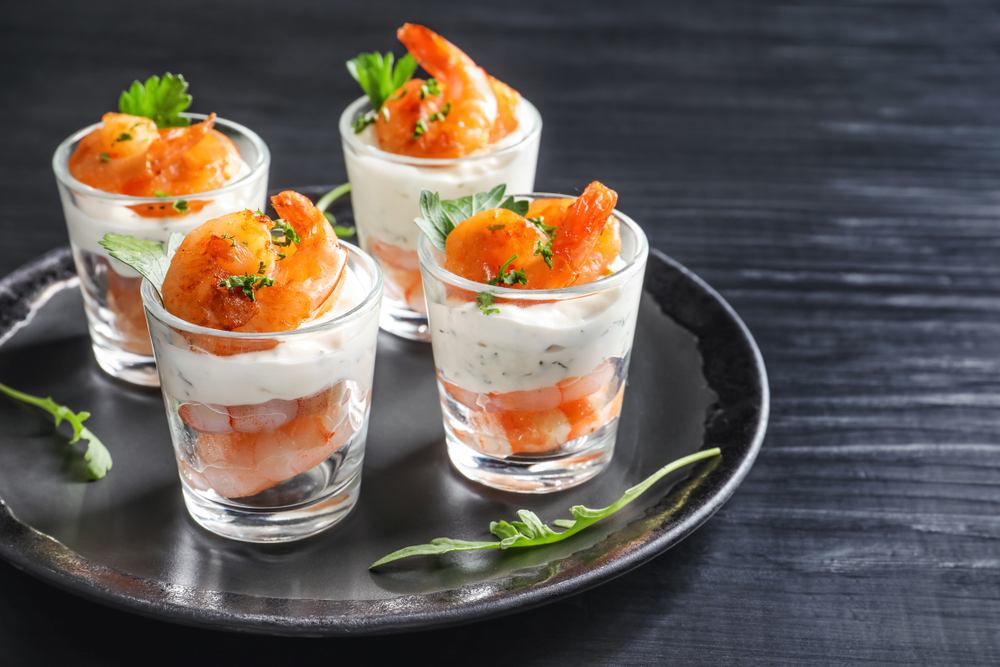
But verrines are also an ideal way to tackle the modern propensity to have a snacky approach to food, a bit of this and a bit of that.
As a matter of fact, it’s precisely that aspect of verrines that led Jacques and Laurent Pourcel, who run the three-star Michelin restaurant Jardin des Sens in Montpellier, France, to design what they call ‘’international tapas’’ for Pourcel signature restaurants. Sens in the EastWest hotel in Geneva, Switzerland, for example, serves French-based, fusiony snacks including verrines that can be ordered in threes for snacks or a light meal – order two or three times three (all different) for a full meal.
Balancing The View Of Verrines
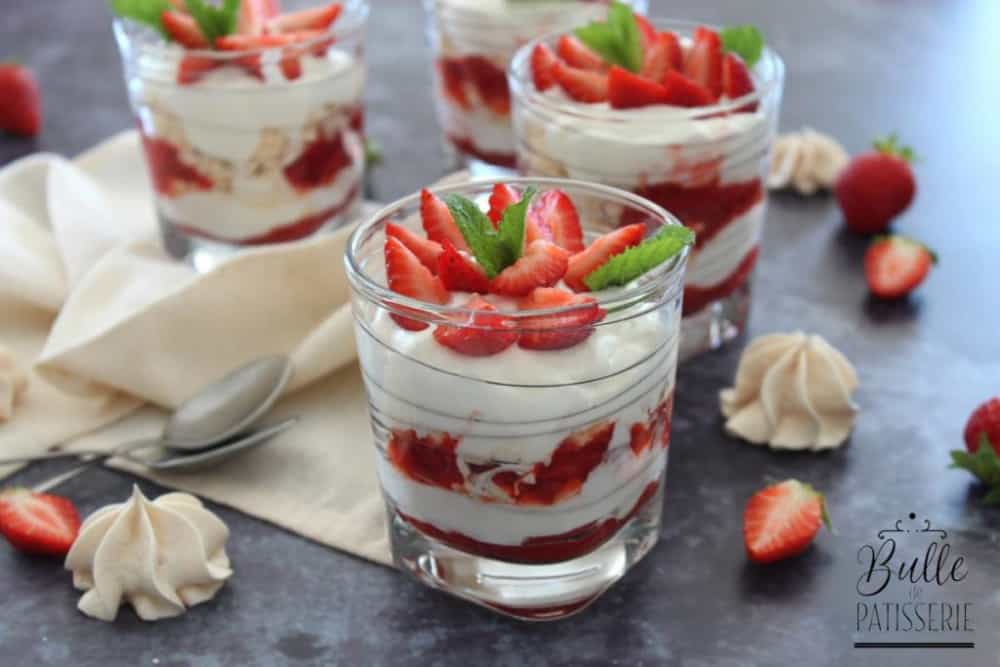
Verrine detractors point out that they may require sourcing and buying the glasses, not to mention a lot of creativity and prep time – especially if you’re making several different kinds. So: potentially a budget item, time-consuming, and at best only for those with expert skills.
Other cons – seen now from the diner’s side – include that verrines are new-fangled, trendy, pretentious, fussy, girlie both in concept and handling, and that they just don’t cater to a red-blooded guy’s meat and tatie approach to a solid meal.
Fair enough. But wouldn’t a more nuanced approach be that if a verrine can serve your ends as cook or diner, go for it, and if it can’t just stay away? The important thing is to be savvy enough to know what a verrine is and that you have a choice.


